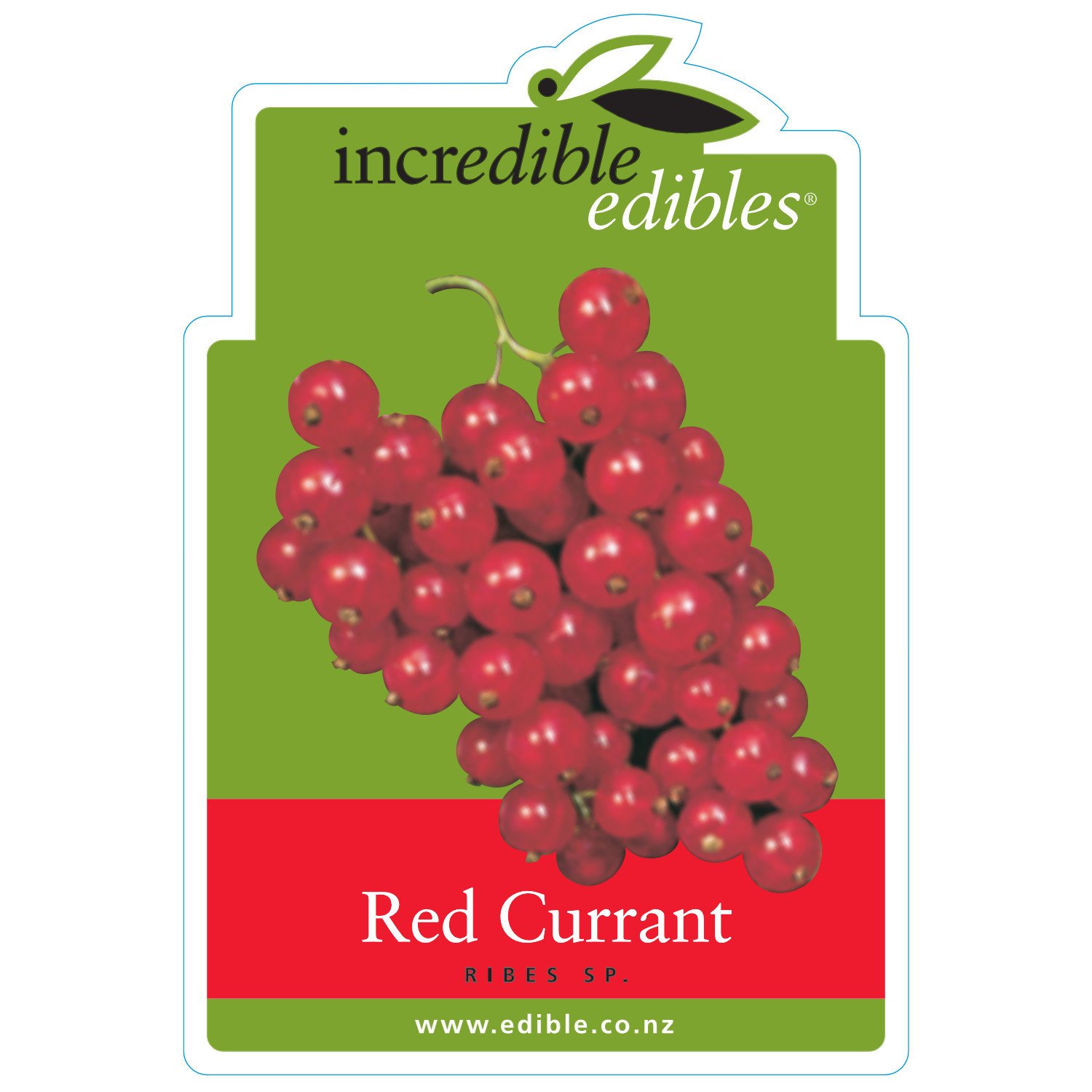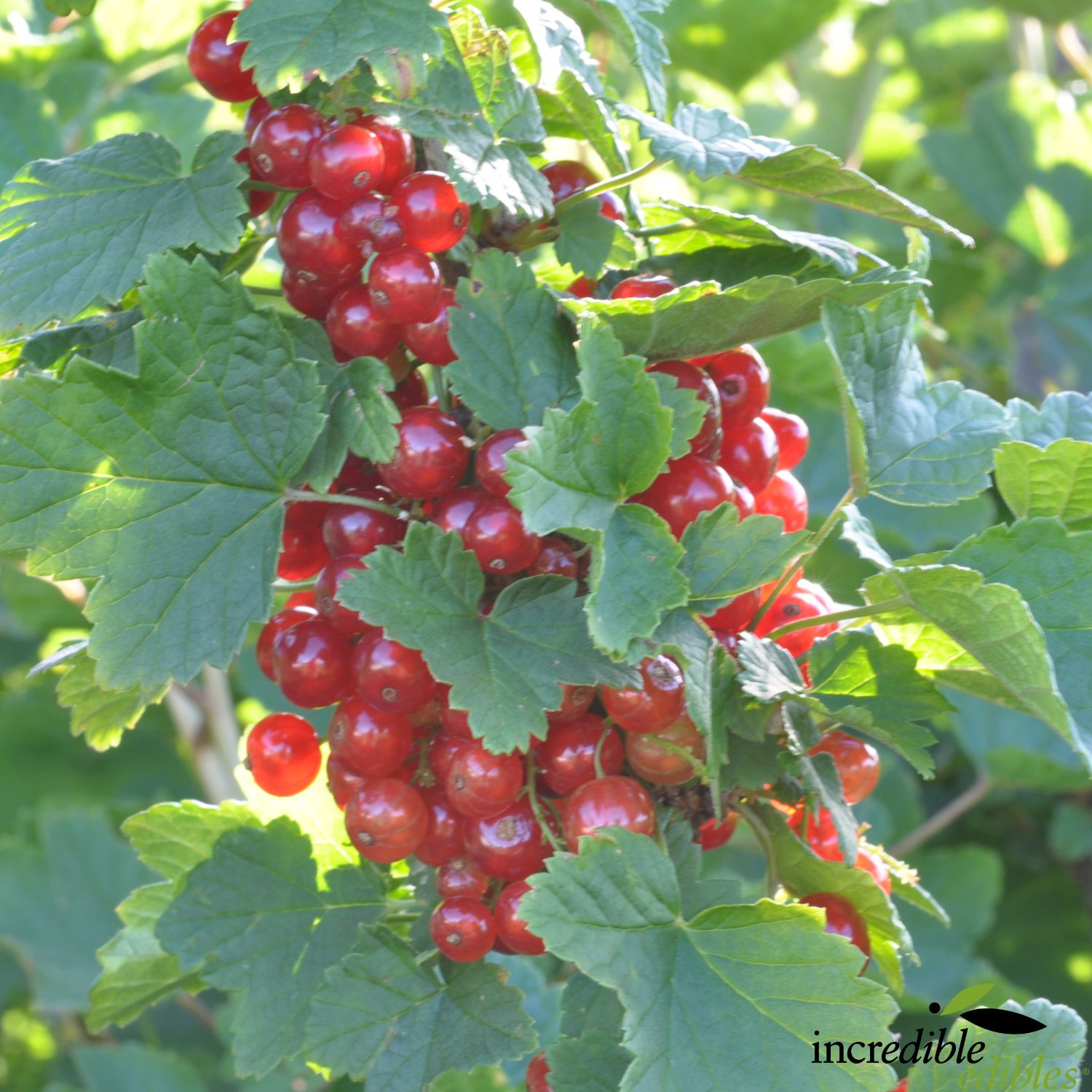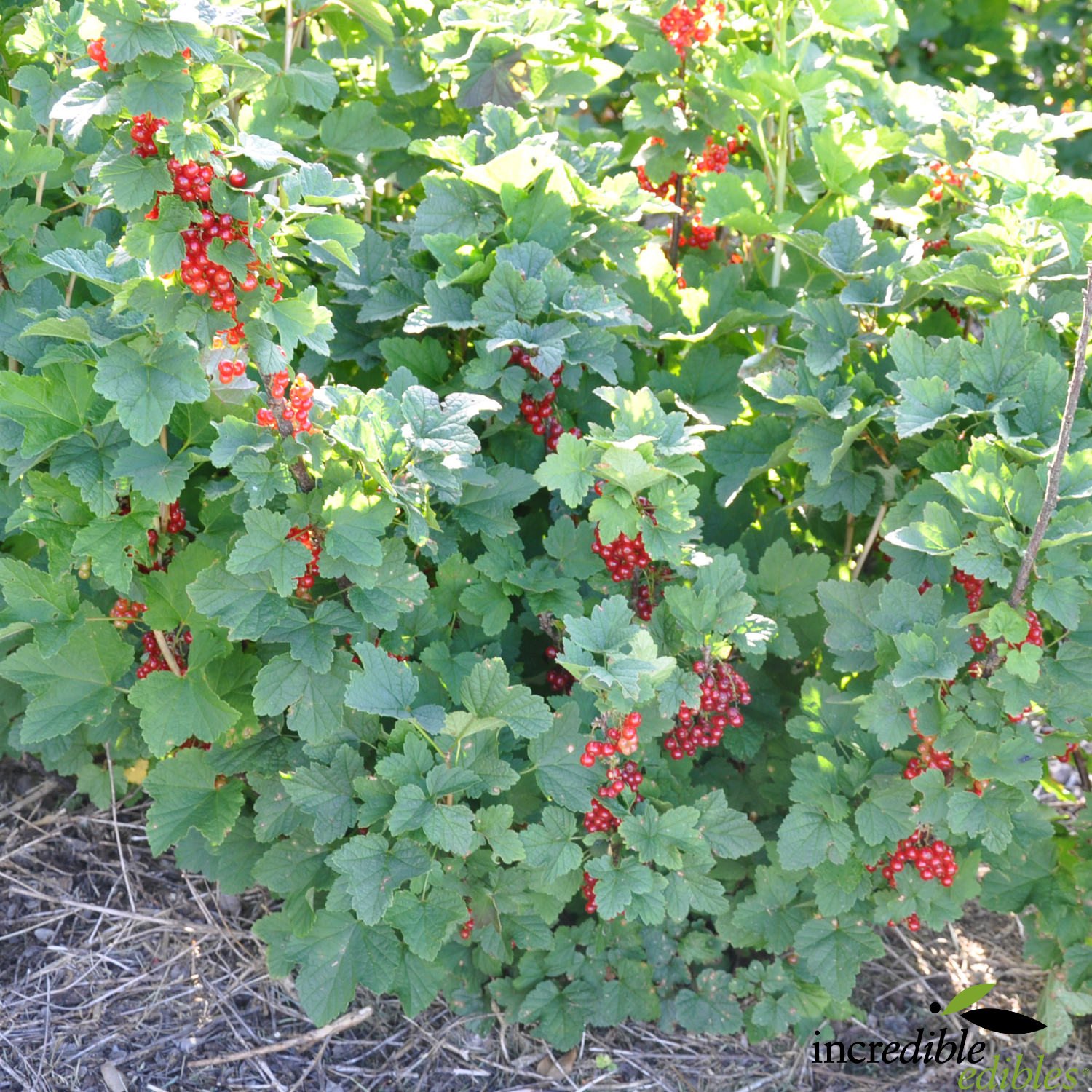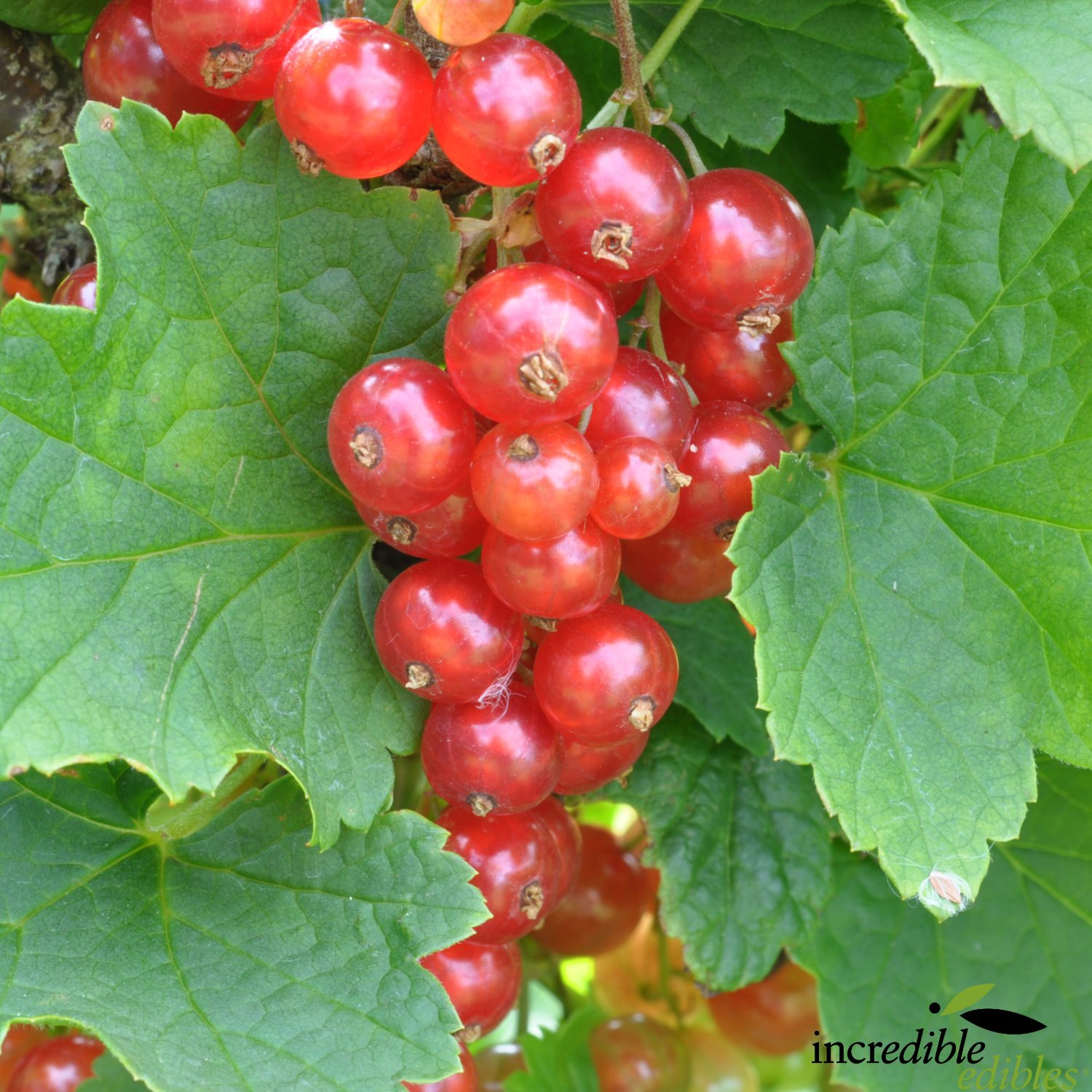Currant Red
Currants can be grown as a free-standing bush or hedge. Grown in the shade of other trees or on the south side of buildings and are easily squeezed into a small garden, protect from the hot afternoon sun. Although a plant requires a winter chill, Auckland provides enough chilling hours to achieve this.
Strings of lacelike attractive small flowers appear in early spring, followed by strings of bright red shiny berries that can be harvested in early December. Remove the whole string by cutting the stem. Leaves are blue-green, single lobed and maple-like. Eat fresh or freeze whole, make into jelly, jam, juice or add to ice cream, cordial and liqueur.
After planting:
Prune young bushes back to two buds above the ground and allow them to grow, then do not prune for two seasons.
After two seasons, prune to maintain size by removing old stems to a new low bud, removing at least 1/3 of the old cane.
Aim to have 8-10 shoots per bush.
Each cane should be in place for at most three years. Encourage as much young wood as possible by cutting old wood to new buds in winter. The red and white currants are slightly lower growing than the black currants (1-1.5m high).
Currants can be grown as a free-standing bush or hedge. Grown in the shade of other trees or on the south side of buildings and are easily squeezed into a small garden, protect from the hot afternoon sun. Although a plant requires a winter chill, Auckland provides enough chilling hours to achieve this.
Strings of lacelike attractive small flowers appear in early spring, followed by strings of bright red shiny berries that can be harvested in early December. Remove the whole string by cutting the stem. Leaves are blue-green, single lobed and maple-like. Eat fresh or freeze whole, make into jelly, jam, juice or add to ice cream, cordial and liqueur.
After planting:
Prune young bushes back to two buds above the ground and allow them to grow, then do not prune for two seasons.
After two seasons, prune to maintain size by removing old stems to a new low bud, removing at least 1/3 of the old cane.
Aim to have 8-10 shoots per bush.
Each cane should be in place for at most three years. Encourage as much young wood as possible by cutting old wood to new buds in winter. The red and white currants are slightly lower growing than the black currants (1-1.5m high).
Currants can be grown as a free-standing bush or hedge. Grown in the shade of other trees or on the south side of buildings and are easily squeezed into a small garden, protect from the hot afternoon sun. Although a plant requires a winter chill, Auckland provides enough chilling hours to achieve this.
Strings of lacelike attractive small flowers appear in early spring, followed by strings of bright red shiny berries that can be harvested in early December. Remove the whole string by cutting the stem. Leaves are blue-green, single lobed and maple-like. Eat fresh or freeze whole, make into jelly, jam, juice or add to ice cream, cordial and liqueur.
After planting:
Prune young bushes back to two buds above the ground and allow them to grow, then do not prune for two seasons.
After two seasons, prune to maintain size by removing old stems to a new low bud, removing at least 1/3 of the old cane.
Aim to have 8-10 shoots per bush.
Each cane should be in place for at most three years. Encourage as much young wood as possible by cutting old wood to new buds in winter. The red and white currants are slightly lower growing than the black currants (1-1.5m high).





